
Expect the Extraordinary Brahms’s Fourth Symphony MARCH 7 – 9, 2024 23 24
PER MONTH $29
SUBSCRIBE FOR JUST TICKETS! ACCESS TO OVER 100 CONCERTS PER YEAR!
$10
Why join the Members Club?
IT PAYS FOR ITSELF!
Pay just $10 for tickets regularly priced up to $105. Buy as few as 4 concerts per year and you’ll save over single ticket prices.
ULTIMATE FLEXIBILITY
Reserve the day-of or weeks before. It’s your choice.
GREAT SEATS ON DEMAND!
Choose your preferred section at Severance Music Center or Blossom Music Center, and we’ll reserve the best available seats for you.
20% OFF ADDITIONAL TICKETS
Share The Cleveland Orchestra with family and friends. You can now purchase extra tickets with the 20% off subscriber’s discount.
CLEVELANDORCHESTRA.COM/MEMBERSCLUB
2023/2024 SEASON
JACK, JOSEPH AND MORTON MANDEL CONCERT HALL AT SEVERANCE MUSIC CENTER
Brahms’s Fourth Symphony
Thursday, March 7, 2024, at 7:30 PM
Friday, March 8, 2024, at 7:30 PM
Saturday, March 9, 2024, at 8 PM
Fabio Luisi, conductor
Carl Maria von Weber (1786–1826)
Oded Zehavi (b. 1961)
Overture
Concerto for Piccolo and Chamber Orchestra
Mary Kay Fink, piccolo
minutes
14
minutes
20
minutes
minutes
I. Allegro non troppo
II. Andante moderato
III. Allegro giocoso
IV. Allegro energico e passionato
Total approximate running time: 1 hour 24 minutes
Thank you for silencing your electronic devices.
This concert is generously sponsored by The Cleveland Foundation and Cleveland Clinic.
Thursday evening’s performance is dedicated to Rebecca Dunn in recognition of her generous support of music.
Saturday evening’s performance is dedicated to Jim and Myrna Spira in recognition of their generous support of music.
THE CLEVELAND ORCHESTRA COVER: PHOTO BY SYLVIA ELZAFON
clevelandorchestra.com
Johannes Brahms (1833–1897) to Oberon 10
Aurora
World Premiere; commissioned by The Cleveland Orchestra INTERMISSION
40
Symphony No. 4 in E minor, Op. 98



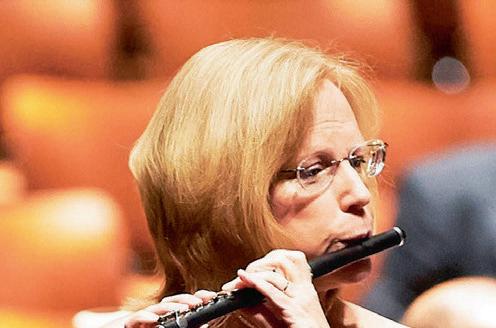
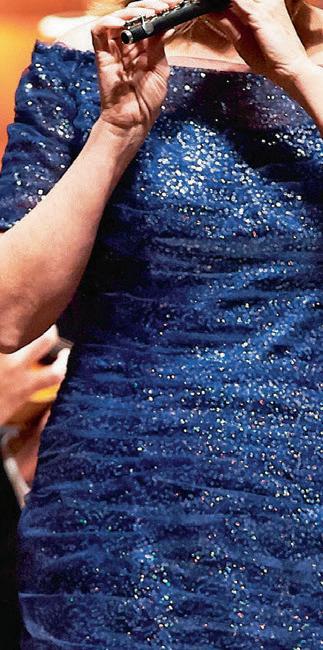

THE THREE DREAMLIKE NOTES on the horn that open this concert suggest the magical fairyland where Oberon — a character made famous in Shakespeare’s A Midsummer Night’s Dream — rules as King of the Elves. After this opening suggestion of mystery and promise, Carl Maria von Weber’s overture to the opera Oberon ranges from a fanciful melodic language to an energetic workout in full symphonic style. These may be seen as the leading features in the other two works on this program led by Fabio Luisi
The piccolo is so familiar as the topmost voice of the orchestra, often whistling and soaring above the other instruments, that it is a revealing experience to hear the instrument given a much more thoughtful, melodic voice by Oded Zehavi in his concerto for piccolo, Aurora. Composed for The Cleveland Orchestra’s Principal Piccolo Mary Kay Fink (above), it is heard here for the first time in its full version with chamber orchestra. This premiere was delayed because of the pandemic, but its single movement, inspired both by the soloist’s playing and the contemplation of the dawn, is a notable addition to the slender repertoire of an instrument not often heard on its own.
Johannes Brahms’s Fourth Symphony is the most earnest of his four, perhaps the most symphonic, although he allows himself the unusual colors of piccolo and triangle in the third-movement scherzo. It is fitting that he closed the symphony with a powerful passacaglia as if in homage to J.S. Bach. (Indeed, the bassline is an adaptation from the finale of Bach’s Cantata No. 150.) There is no movement in the whole symphonic repertoire that so clearly embodies the symphonic ideal and so conclusively justifies its very existence.
The four symphonies are the central core of Brahms’s career as a composer, since he found them difficult to write. He imposed such severe standards on himself that the majestic First Symphony took many years to come to fruition. After the Fourth, Brahms lived another 12 years but produced no more orchestral music except the Double Concerto of 1887. He had plenty more to say but preferred to say it in the intimate media of chamber music and song.
— Hugh Macdonald
2 | 2023/2024 SEASON INTRODUCTION
PHOTO BY ROGER MASTROIANNI






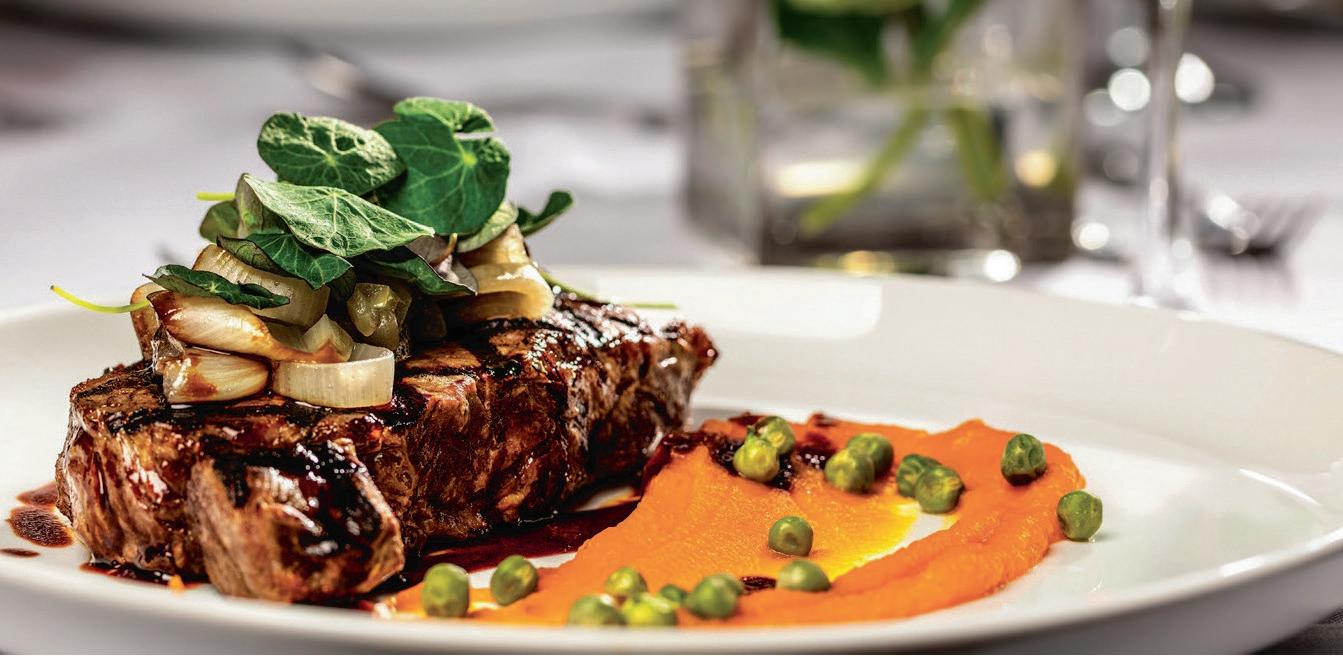

EXPLORE LUXURY SENIOR LIVING IN SHAKER HEIGHTS SHAKER HEIGHTS | (216) 677-4484
THE MUSIC
Overture to Oberon
by Carl Maria von Weber
BORN : November 18, 1786, in Eutin, Holstein (now part of Germany)
DIED: June 5, 1826, in London
▶ COMPOSED: 1825–26
▶ WORLD PREMIERE: April 12, 1826, at Covent Garden, London, with the composer conducting
▶ CLEVELAND ORCHESTRA PREMIERE: February 13, 1919, at West Technical High School in Cleveland, led by Nikolai Sokoloff
▶ ORCHESTRATION: 2 flutes, 2 oboes, 2 clarinets, 2 bassoons, 4 horns, 2 trumpets, 3 trombones, timpani, and strings
▶ DURATION: about 10 minutes
BARELY 38 YEARS OLD , Carl Maria von Weber was incurably ill with tuberculosis. It had been only three years since he had achieved international fame with Der Freischütz. The year after the premiere of his following opera, Euryanthe, he received a letter from Charles Kemble, manager of the Covent Garden Opera in London, commissioning an opera for the 1825 season. Weber was to conduct the opera himself. The doctors advised Weber against such a strenuous journey; the composer, however, declared:
“Whatever I do, whether I go or not, I will be a dead man within one year. However, if I go my children will have something to eat when their father is dead, and they will be hungry if I stay.” Weber’s words proved prophetic; he did indeed pass away soon after the premiere of Oberon.
For the subject of his new opera, Weber had chosen the epic poem Oberon
by the German poet Christoph Martin Wieland (1733–1813). However, the language of the opera was to be English. Wieland’s poem was adapted by the British poet James Robinson Planché, and Weber diligently set about learning the language. He took 150 lessons from an Englishman living in Dresden before he felt confident enough to write music to English words.
The plot of the opera is as follows: Oberon, the King of the Elves, has had a quarrel with his queen, Titania, over the question as to whether a man or a woman is more likely to be unfaithful. Oberon vows to avoid Titania until a couple is found who are unfailing in their fidelity despite dangers and privations. With the help of his attendant spirit, Puck, Oberon finds this couple in Huon, a knight of the court of Charlemagne, and Rezia, daughter of the caliph of
4 | 2023/2024 SEASON

Baghdad. Through a great many misadventures, the two lovers remain steadfast, ensuring not only their own happiness at the end, but also that of Oberon and Titania.
Most of the melodies of the exciting and vibrant overture to Oberon are taken from the opera itself. It opens with a horn solo — fittingly so, since in the
opera, Oberon gives Huon a magic horn to protect him during his adventures. The climactic theme of the overture comes from the famous soprano solo known as the “Ocean” aria. This is music written when Beethoven was still alive, yet it is filled with the spirit of a new era. It shows that Weber is justly regarded as the father of German Romantic opera.
— Peter Laki
Peter Laki is a musicologist and frequent lecturer on classical music. He is a visiting associate professor of music at Bard College.
clevelandorchestra.com | 5
IMAGE COURTESY OF THE NATIONAL
Based on the epic poem, Oberon, this detail from The Reconciliation of Oberon and Titania (1847) by Sir Joseph Noel Paton brings together the main characters at the end of their quarrel.
GALLERIES OF SCOTLAND
Aurora Concerto for Piccolo and Chamber Orchestra
by Oded Zehavi
BORN : February 2, 1961, in Jerusalem
▶ COMPOSED: 2019
▶ WORLD PREMIERE: March 1, 2020, at the Cleveland Institute of Music, in a chamber version with soloist Mary Kay Fink, pianist Nicholas Underhill, and percussionist Dylan Moffitt
▶ This weekend’s performances mark the world and Cleveland Orchestra premieres of the piccolo and chamber orchestra version of Oded Zehavi’s Aurora, commissioned by The Cleveland Orchestra.
▶ ORCHESTRATION: flute, clarinet, bass clarinet, 2 bassoons, horn, timpani, percussion (chimes, vibraphone, wood blocks), harp, and strings, plus solo piccolo
▶ DURATION: 14 minutes
THE MUSIC OF Oded Zehavi is often singled out for its stylistic diversity and mélange of Western and Middle Eastern musical heritages. But ask him about his inspiration and he will say, “I’m a person’s person, a composer of human experiences. The origin of a piece is the person.” When he heard Principal Piccolo Mary Kay Fink perform in Cleveland in 2015 there was a spark — the kind that moved Johannes Brahms to compose masterpieces for the violin virtuoso Joseph Joachim. Zehavi knew he had found the one for whom he wanted to write a piccolo concerto, an idea he’d sprung long before as a graduate student studying with George Crumb
Meeting Fink was a key moment in what turned out to be an extended journey. So much has transpired since the completion of Aurora in 2019 and its full orchestral premiere in March 2024 (delayed nearly four years), it’s difficult to talk about the piece purely in terms of the composer and performer’s original intentions. There was a global pandemic, emergence into a world that is still trying to find its feet, then heartbreaking loss and international warfare in the run-up to these performances at Severance Music Center. If Zehavi’s music reflects
6 | 2023/2024 SEASON THE MUSIC
Mary Kay Fink (right) has actively championed new music, including Gabriela Lena Frank’s (left) Will-o’-theWisp, which Fink premiered at Severance in 2014.
PHOTO BY ROGER MASTROIANNI

clevelandorchestra.com | 7
human experiences, it seems impossible not to consider these as part of the tapestry. As it is, the sonic landscape of Aurora is deep and spacious enough to accommodate much nuance — a broad palette of mystery and color rooted in clear, lyrical melodies and occasional bells that toll from afar.
The tubular bells have a poignant presence in the Israeli composer’s music, which draws from Jewish and Arabic music traditions, European art song, and contemporary sensibilities. Their sound reflects one of his strongest war memories as a tank commander in the Lebanon War of 1982. At one point his unit was stationed in a churchyard. “While we were there it was completely surreal,”
about what your peers will say about your stylistic coherence. It changes your proportions.”). It even impacted his willingness to have children. After his composition Elmale was premiered in Aqaba, Jordan, by Valery Gergiev and the Kirov Orchestra (now the Mariinsky) in 1996, he told his wife they could go ahead. The commission was part of an international festival that took place in both Israel and Jordan as a gesture of peace.
War, however, continued to mark their lives. The 2023 eruption between Israel and Hamas had the composer devastated and questioning his purpose — again — in the midst of such tragedy. “I am writing this while getting in and out of our bomb
As a composer here I’m wandering, I’m picking up impressions. I capture them, I cherish them.
— Oded Zehavi
says Zehavi, a resident of Tel Aviv and professor at Haifa University. “Every hour you would hear the bells, so I think in every piece of mine you will find these chimes. It is a recurring sound I carry with me from this war.”
His mandatory service as a soldier had other profound effects: He committed to composing because he survived the battlefield and felt obliged to share what he experienced there. It freed him creatively (“After you see what life and death are,” he says, “you don’t care much
shelter in the heart of Tel Aviv,” Zehavi wrote a few weeks into the cataclysmic turmoil following the Hamas attacks of October 7. “Lately I do ask myself why am I doing all this. What is the point of writing music in these times. I used to say that writing through my perspective of things is important, but I am not so sure of it anymore.”
What must hold true is something he said, before the latest outbreak of war in the region, about his creative process for Aurora. “As a composer here I’m
8 | 2023/2024 SEASON
THE MUSIC

wandering, I’m picking up impressions. I capture them, I cherish them.”
His pivot to people as the primary inspiration for his music came well into his career, after his multifaceted body of work had been widely played, including vocal, chamber, and orchestral works along with film soundtracks and pop/rock arrangements. It was during his artist residency at the Cleveland Institute of Music that Zehavi saw Fink in concert and was immediately taken with her potent musicality.
“Mary Kay is so human. She has such a wide range of expression as a person, a musician, and a player that I didn’t see anything she couldn’t do,” Zehavi says. He approached her about a concerto and Fink’s instructions were specific: a 10–15–minute composition that steered clear of common piccolo tropes (birds, marches) and an orchestral accompaniment that didn’t challenge the volume of the instrument.
“Oded beautifully avoided all of those stereotypes and really showed that the piccolo can be virtuosic and also very soulful. That’s what I was looking for,” says Fink, who heads the flute
clevelandorchestra.com | 9
PHOTO COURTESY OF
The multicultural sounds of Oded Zehavi’s youth included the ringing of church bells, like this one captured by Dutch photographer Willem van de Poll in 1950.
WIKIMEDIA COMMONS
THE MUSIC
department at CIM and has actively commissioned works for piccolo, including Gabriela Lena Frank’s Will-o’-the-Wisp, a tone poem she premiered with The Cleveland Orchestra in 2014.
Zehavi’s goal from the start was to reveal the piccolo’s — and Fink’s — melodic and expressive capabilities, and he is keen to credit Fink for her contributions in what was a close collaboration. “When you hear a player who isn’t fighting the instrument but lets the vibrations happen and has soulful control, all you want to do is to give them a vehicle,” he notes. “You become an instrument in their mastery of their instrument.”
The intimate chamber orchestra scoring includes only horn for brass and several winds, along with timpani, vibraphone, wood blocks, the tubular bells (also called chimes), harp, and strings. (At Fink’s request, Zehavi also composed a chamber reduction for piccolo, piano, and percussion that was performed in March 2020, just as the world went into pandemic lockdown.) Together there is a tight conversation of timbres, melody, tones, and textures — grounded in melodious richness — that offer many moods and colors set against an ambient wash.
As with much of Zehavi’s music, Aurora is also tinged with a solitary, sometimes melancholic, feeling, with echoes of something both ancient and contemporary. The composer’s beautifully blended aesthetic is a testament to his own
personal history. Born in Jerusalem, he describes his upbringing in a “very multicultural environment” near the Old City. “On top of all the Jewish melodies from various ethnically diverse synagogues around me,” he says, “we also heard the mosques calling and the church bells from the other side of the wall. So for me variety was the baseline, the norm.”
His studies then followed a series of teachers from international backgrounds and musical styles, including a Hungarian student of Bartók and a Russian one of Shostakovich, as well as American composers George Crumb, Sheila Silver, and Chinary Ung. Zehavi’s ease crossing genres and eras even shows in the way he mentions Sondheim’s Sweeney Todd and Mahler in the same thought stream.
If Zehavi’s melding of musical styles and cultural influences could be a mirror of the human world we live in, perhaps there is some sanctuary to be found in its cohesive and transcendent harmony. In Aurora, the clarity of the piccolo’s long, sustained melodies leads the way. And despite the specificity of its title, the work is meant to evoke a space that is not a particular thing but rather the essence of change — of something emerging out of something else. An emergence that we have some capacity to interpret, shape, and perhaps cherish.
— Luna Shyr
Luna Shyr is a freelance writer and editor. Her work has appeared in National Geographic, The Wall Street Journal, Atlas Obscura, and at Lincoln Center for the Performing Arts.
10 | 2023/2024 SEASON
Composer’s Note
Aurora, concerto for piccolo and chamber orchestra, was commissioned by The Cleveland Orchestra for [Principal Piccolo] Mary Kay Fink. The piece is comprised of three segments played without breaks, with each segment displaying a different characteristic: a soulful first portion leading to a lyrical second part and concluding with an energetic and fast section.
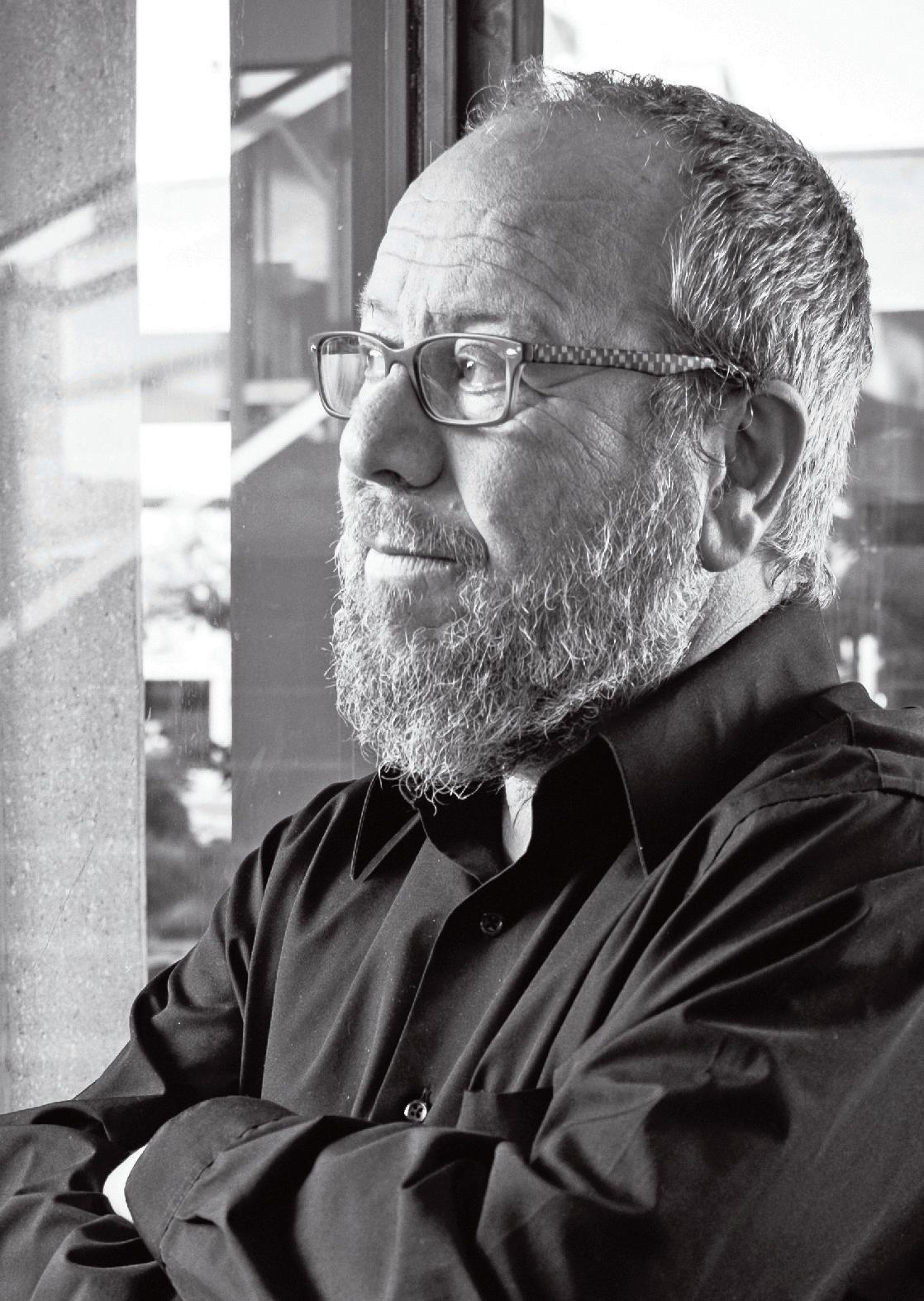
In the first stages of our collaboration, Mary Kay requested that the piece not exceed 14 minutes. By this request, she touched on one of most challenging issues for today’s composers: creating musical forms that reflect today’s fast-changing world, while also creating stimulating and exciting musical universes.
It was important to me to bring out the fantastic melodic potential that results from the exceptional ranges of this unusual instrument. For me, the piccolo is a highly expressive, lyrical, and dramatic instrument and not just an ornamental or orchestration device. Some of the ensemble sections draw from my native region’s heterophonic musical textures, and one of my favorite percussion instruments (the tubular bells) is given an opportunity to sound its unique voice as well.
I am indebted to Mary Kay Fink for her important contribution to the final structural shape of this work.
— Oded Zehavi
PHOTO COURTESY OF ODED ZEHAVI clevelandorchestra.com | 11
Symphony No. 4 in E minor, Op. 98
by Johannes Brahms
BORN : May 7, 1833, in Hamburg
DIED: April 3, 1897, in Vienna
▶ COMPOSED: 1884–85
▶ WORLD PREMIERE: October 25, 1885, in Meiningen, Germany, with the composer conducting
▶ CLEVELAND ORCHESTRA PREMIERE: April 9, 1925, at Cleveland’s Masonic Auditorium, led by Music Director Nikolai Sokoloff
▶ ORCHESTRATION: 2 flutes (2nd doubling piccolo), 2 oboes, 2 clarinets, 2 bassoons, contrabassoon, 4 horns, 2 trumpets, 3 trombones, timpani, triangle, and strings
▶ DURATION: about 40 minutes
IT IS USUALLY SAID of Brahms that he delayed composing a symphony until after he was 40 out of respect for Beethoven’s great set of nine — and from a fear of being found wanting in comparison with his mighty predecessor. There is much truth in this. Indeed, Brahms acknowledged it himself.
When he finally resolved to write a symphony, Brahms had Robert Schumann’s symphonies sounding in his ears as strongly as Beethoven’s — which is why a similarity can be heard between the opening of Schumann’s Fourth and the way in which Brahms began his First. When we reach the finale of Brahms’s First, though, we do unmistakably encounter an echo of the choral finale of Beethoven’s Ninth. “Any fool can see that,” was Brahms’s dismissive comment.
Once he had given one symphony to
the world, it was easier for Brahms to embark on its successors. The rest followed more rapidly, within nine years. The Second followed very soon after the First, and the Fourth appeared within two years of the Third.
Self-critical to the point where he destroyed an unknown number of works that did not satisfy his exacting standards, Brahms always regarded symphonic writing as a tough proposition, to the point where we should be thankful that he gave us as many as four — just as we should be always grateful for the opportunity to hear each of them.
If Brahms had written a fifth symphony toward the end of his life, one might imagine something gloriously mellow, like the late clarinet music or the Four Serious Songs. But that is not the direction in which the Fourth Symphony
12 | 2023/2024 SEASON THE MUSIC
1067482_Cleveland Orchestra_Week 15_single_sw



pointed. This work is, in fact, the least comfortable of his four symphonies in terms of musical language and sonority. Brahms was aiming at something a bit more modern than we sometimes give him credit. (We find it hard to imagine, similarly, that such a beautiful work as the Violin Concerto struck some of its original hearers as uncouth, but ... history tells us otherwise.)
There is a higher level of dissonance and tension in the Fourth Symphony than in most of Brahms’s music — but as always with this composer, it is perfectly judged, and balanced by faultless craft and an abundant melodic gift.
The symphony was first performed in Meiningen, a small town in central Germany that was briefly of great importance in the musical world thanks to the leadership of younger musicians like Hans von Bülow and Richard Strauss, who strongly encouraged Brahms and persuaded him in 1885 to grant them the first performance of his latest symphony, which would be a safer haven from the fickle audiences of hometown Vienna, especially as Wagnermania was sweeping across Europe.
In general outline, Brahms does not deviate from his Classical inheritance — a broad, substantial first movement, a lyrical slow movement, a jocular scherzo, and a strong, assertive finale. As usual, Brahms shows little interest in the more
clevelandorchestra.com | 13
Though the self-critical Brahms took decades to complete his First Symphony, the remaining three followed in rapid succession.
BY
PHOTO
ERWIN HANFSTAENGL / COURTESY OF WIKIMEDIA COMMONS
colorful instruments that most composers were delighting in at that time — no English horn, no bass clarinet, no tuba, no harp. He does, however, ask for a contrabassoon in the last two movements to enrich the bass, and a piccolo for the third movement, where he also ventures into the percussion section with a very un-Brahmsian triangle. And, although he clung to the old-fashioned natural horns, not the valved variety then in universal use, he writes for the horns with infinite mastery.
After the First Symphony, whose opening Allegro is preceded by a slow introduction like a number of Beethoven’s symphonies (and Schumann’s Fourth), Brahms’s remaining symphonies adopt the maxim he always preferred — state your first theme clearly and firmly at the very outset. In this case, the first movement’s graceful opening theme, with its drooping thirds, is woven into the texture of the whole movement. And his writing for strings had never been so rich as here. The main contrast in this movement is rhythmic, for triplet figures keep intruding. At the end of the movement, however, the powerful drive of the original 4/4 pulse is unstoppable.
A pair of horns declare the slow second movement opening with a misleadingly forceful gesture. For this is the tenderest of slow movements, rich in complex harmony and smooth melody. The clarinet is especially favored, and the second subject (first heard in the cellos) is one of Brahms’s greatest inspirations, intensified each time it comes back.
The scherzo third movement brings out the hearty hill-walker in Brahms, and the triangle signals a breeziness that we rarely find in his music. The slower middle section is all too brief, as if Brahms was in a hurry to get back to his vigorous exercise, energetic enough to wonder what kind of finale could be sufficiently different to follow it.
For the last movement, Brahms did break with convention and composed a passacaglia (although he did not call it that), a Baroque form grandly exhibited by J.S. Bach in which a short harmonic sequence is many times repeated in elaborate variation. This is the moment the trombones have been waiting for (a discipline mirrored from Beethoven’s Fifth), and they lay down the eight firm chords that define the sequence. The challenge for Brahms — as it was for Bach, too — is not to have the music seem to be stuck in the home key. His eight-bar outline is heard 30 times in wonderfully inventive variation, but it escapes from E minor only to taste, briefly, the nectar of E major following a desolate flute solo. The return to E minor sounds like a formal recapitulation of the beginning, with strong wind chords, but it simply heralds a stirring continuation of the variations, until, following one tremendous sequence after another, the symphony, in Sir Donald Tovey’s memorable words, “storms to its tragic close.”
— Hugh Macdonald
Hugh Macdonald is Avis H. Blewett Professor Emeritus of Music at Washington University in St. Louis. He has written books on Beethoven, Berlioz, Bizet, and Scriabin, as well as Music in 1853: The Biography of a Year
14 | 2023/2024 SEASON
THE MUSIC
We're in Your Corner
We're in Your Corner
People today can spend nearly half their lives over the age of 50. That’s a lot of living. So, it helps to have a wise friend and fierce defender like AARP in your corner and in your community so your money, health and happiness live as long as you do.
People today can spend nearly half their lives over the age of 50. That’s a lot of living. So, it helps to have a wise friend and fierce defender like AARP in your corner and in your community so your money, health and happiness live as long as you do.
AARP offers educational resources, engaging community events, and regular updates to help you achieve your goals and stay connected.
AARP offers educational resources, engaging community events, and regular updates to help you achieve your goals and stay connected.
Find us at aarp.org/oh.
Find us at aarp.org/oh.
/AARPOH
/AARPOH
@AARPOhio
@AARPOhio

 PHOTO BY SYLVIA ELZAFON
PHOTO BY SYLVIA ELZAFON
THE CONDUCTOR
Fabio Luisi
Grammy Award–winner Fabio Luisi launched his tenure as music director of the Dallas Symphony Orchestra (DSO) at the start of the 2020–21 season. A maestro of major international standing, the Italian conductor is also principal conductor of the Danish National Symphony Orchestra and the NHK Symphony Orchestra in Tokyo. He previously served as principal conductor of the Metropolitan Opera and general music director of the Zurich Opera.
Luisi’s 2023–24 season with the Dallas Symphony features monumental works by Mahler, Brahms, and Liszt, world premieres by Jessie Montgomery, Xi Wang, and Anna Clyne, and concludes with the first two operas in Wagner’s epic Ring cycle. The DSO and Luisi will continue the cycle in the 2024–25 season, marking the first time in recent history an American orchestra has mounted the full Ring cycle.
Other highlights of Luisi’s 2023–24 season include his debut with the Berlin Philharmonic, concerts with the Cleveland and Philadelphia orchestras, and his return to the Royal Concertgebouw Orchestra, followed by a tour in Japan and Korea.
Luisi’s extensive discography includes rare operas by Verdi and Salieri, the symphonic repertoire of Honegger, Respighi, and Schmidt, and an awardwinning account of Bruckner’s Ninth Symphony with the Staatskapelle Dresden. The conductor received his first Grammy
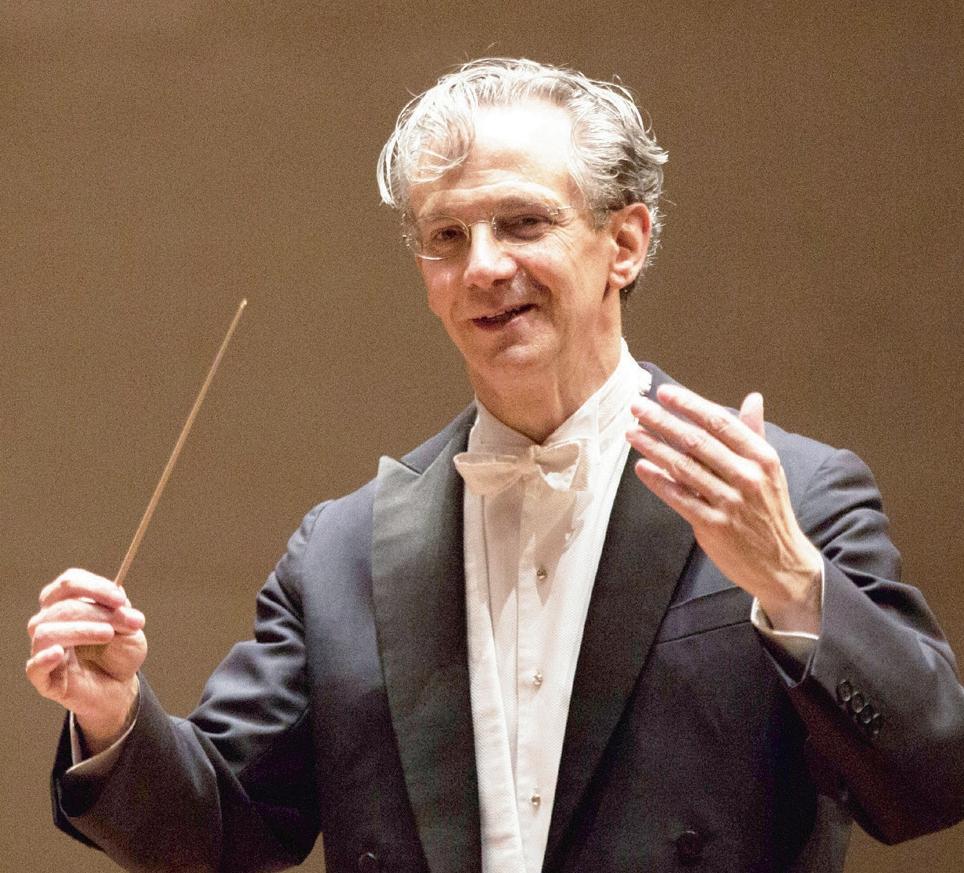
Award in March 2013 for Deutsche Grammophon’s DVD release of the last two operas of Wagner’s Ring cycle with the Metropolitan Opera.
Born in Genoa, Luisi began piano studies at age 4 and received his diploma from the Conservatorio Niccolò Paganini. He later studied conducting with Milan Horvat at the University for Music and Performing Arts in Graz. Named both Cavaliere della Repubblica Italiana and Commendatore della Stella d’Italia, in 2014 he was awarded the Grifo d’Oro, the highest honor given by the city of Genoa, for his contributions to the city’s cultural legacy. Off the podium, Luisi is an accomplished composer whose Saint Bonaventure Mass received its world premiere at St. Bonaventure University, followed by its New York City premiere in the MetLiveArts series. Luisi is also a passionate maker of perfumes, which he produces in a one-person operation at FL Parfums.
clevelandorchestra.com | 17
THE CLEVELAND ORCHESTRA’S DIGITAL STREAMING SERVICE & APP


Experience The Cleveland Orchestra’s digital platform with new & improved features.

NEW Concert Experiences
Experience on-demand concerts with exclusive interviews and behind-the-scenes features!
Now available: Ravel’s Piano Concerto in G major featuring Víkingur Ólafsson.
NEW Livestreamed Concerts
Enjoy six concerts broadcast live from Severance throughout the 2023 – 24 season.
COMING SOON
Archival Audio Recordings
By popular demand, stream exclusive recordings from The Cleveland Orchestra’s audio archives.
NEW Educational Content
Access videos and learning resources for children, students, and teachers. Visit stream.adella.live/premium or scan the QR code to secure your subscription today!

Questions? Email adellahelp@clevelandorchestra.com or call 216-231-7300
THE ARTIST
Mary Kay Fink
Principal Piccolo | Flute
ANNE M. AND M. ROGER CLAPP CHAIR
Mary Kay Fink joined The Cleveland Orchestra’s flute section in 1990. This is her sixth appearance with the Orchestra as soloist and the second world premiere piccolo concerto presented.
Born in Milwaukee, Fink began playing flute at age 10. She holds a bachelor’s degree from the Oberlin Conservatory of Music, where she studied with Robert Willoughby, and a master’s degree from The Juilliard School, where she studied with Julius Baker and Paula Robison. Fink also studied with avant-garde flutist-composer Robert Dick. She was awarded first prize in the 1986 National Flute Association Young Artist Competition. The following year, the Association sponsored her formal debut recital at Carnegie Hall’s Weill Recital Hall.
Before coming to Cleveland, Fink was a member of the New Jersey Symphony Orchestra; the Madison Symphony, where she was principal flute; and the New York Philharmonic, where she was acting piccolo. She has appeared as a soloist with the Bismarck Symphony, Concert Artists of Baltimore, New Mexico Symphony, Madison Symphony, Milwaukee Symphony Orchestra (as a youth soloist), New Jersey Symphony, Chicago Philharmonic, and the Ohio Chamber Orchestra. She also performed
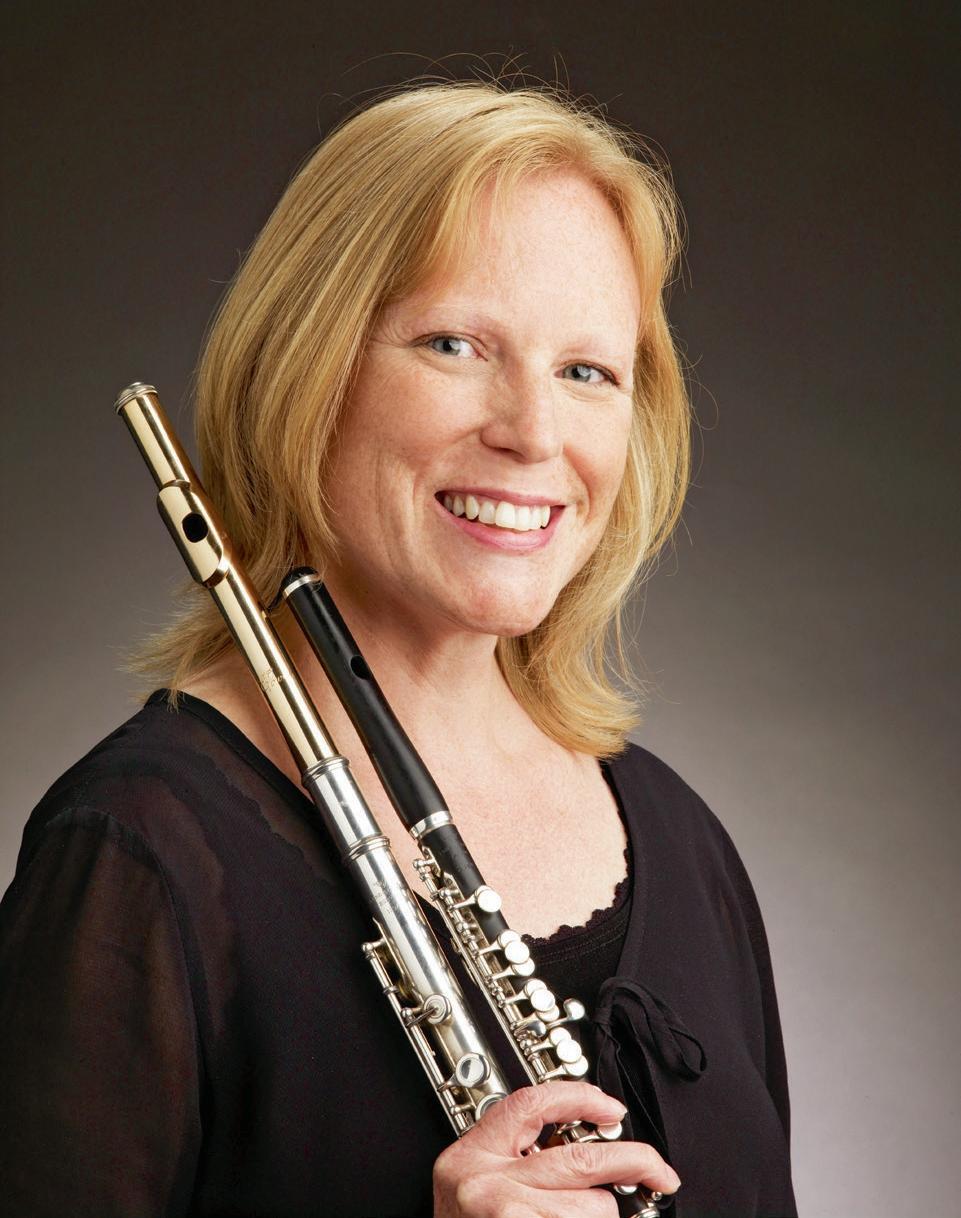
at the 2007 National Flute Association Convention in Albuquerque, marking her fifth invited appearance at a National Flute Association convention.
Fink teaches flute and piccolo at the Cleveland Institute of Music and privately. She has also served on the faculties of UW-Madison and Baldwin Wallace University, and has given masterclasses at many universities and conservatories, both nationwide and abroad. She is a member of the Cleveland Chamber Collective and performs in solo and chamber music recitals throughout the Cleveland area. In April, she will perform with a small ensemble at the Low Flutes Festival in Washington, DC.
clevelandorchestra.com | 19 PHOTO BY ROGER
MASTROIANNI



34300 Solon Road | Solon, OH | 440-248-2424 | 800-260-2949 One block south of Rt. 422 & SOM Center Road 10-8 M/Th | 10-5:30 Tu/W/F/Sa | www.sedlakinteriors.com Complimentary Delivery and Set-Up Within 60 Miles. CELEBRATING






™ Mike Giarrizzo Sr. web: ljicollisioncenter.com (216) 364-7100 bw.edu
Sound of Music | Baldwin Wallace Music Theatre at Blossom Music Center CLEVELANDORCHESTRA.COM/REWARDS | 216-231-1111 THE PLACE FOR FANS OF THE CLEVELAND ORCHESTRA EARN POINTS • Attend concerts • Watch videos • Answer quizzes • Give feedback GET REWARDS • Seat upgrades & exclusive content • FREE season of Adella with 3000 Rewards points • VIP experiences & more JOIN NOW Log in to your account at my.clevelandorchestra.com and click “Rewards” LJI builds con dence in every customer and ensures quality repairs and superior customer service. Our commitment is to achieve and retain customer loyalty for life! 27100 Chagrin Blvd. at I-271 Orange Village (216)364-7100 1640 Lee Rd. at Mayfield Cleveland Hts. (216) 932-7100 TWO LOCATIONS Customer Con dence – Priority One™ ljicollisioncenter.com Lauren Angie Jill Strauss
The
“SWEET!”
— you, as you secure tickets for the best seats in the house Cleveland Orchestra donors enjoy a variety of great benefits including priority presale for select concert tickets. Past presales have included sell-out programs such as Ax , Kavakos & Ma in Recital, Holiday Concerts , and movie presentations like The Princess Bride and more.

John Williams conducted The Cleveland Orchestra in a concert of his music in 2022. The concert was a sell-out success, and donors had early access to tickets.
your gift of $180 or just $15 per month, this sweet priority access is yours.

Give today for first dibs on tickets! Scan QR to visit clevelandorchestra.com/give Or call 216-456-8400
With
ABOUT THE CLEVELAND ORCHESTRA
NOW IN ITS SECOND CENTURY ,
The Cleveland Orchestra, under the leadership of Music Director Franz Welser-Möst since 2002, is one of the most sought-after performing ensembles in the world. Year after year, the ensemble exemplifies extraordinary artistic excellence, creative programming, and community engagement. The New York Times has called Cleveland “the best in America” for its virtuosity, elegance of sound, variety of color, and chamber-like musical cohesion.

Founded by Adella Prentiss Hughes, the Orchestra performed its inaugural concert in December 1918. By the middle of the century, decades of growth and sustained support had turned it into one of the most admired globally.
The past decade has seen an increasing number of young people attending concerts, bringing fresh attention to The Cleveland Orchestra’s legendary sound and committed programming. More recently, the Orchestra launched several bold digital projects, including the streaming platform Adella, the podcast On a Personal Note, and its own recording label, a new chapter in the Orchestra’s long and distinguished recording and broadcast history. Together, they have captured the Orchestra’s unique artistry and the musical achievements of the Welser-Möst and Cleveland Orchestra partnership.
The 2023 – 24 season marks Franz Welser-Möst’s 22nd year as music director, a period in which The Cleveland Orchestra earned unprecedented acclaim around the world, including a series of residencies at the Musikverein in Vienna, the first of its kind by an American orchestra, and a number of acclaimed opera presentations.
Since 1918, seven music directors — Nikolai Sokoloff, Artur Rodziński, Erich Leinsdorf, George Szell, Lorin Maazel, Christoph von Dohnányi, and Franz Welser-Möst — have guided and shaped the ensemble’s growth and sound. Through concerts at home and on tour, broadcasts, and a catalog of acclaimed recordings, The Cleveland Orchestra is heard today by a growing group of fans around the world.


clevelandorchestra.com | 23
@ClevelandOrchestra @clevelandorchestra @CleveOrchestra @Cleveorch PHOTO BY ROGER
MASTROIANNI
THE CLEVELAND ORCHESTRA
Franz Welser-Möst, Music Director
KELVIN SMITH FAMILY CHAIR
FIRST VIOLINS
David Radzynski
CONCERTMASTER
Blossom-Lee Chair
Jung-Min Amy Lee
ASSOCIATE
CONCERTMASTER
Gretchen D. and Ward Smith
Chair
Jessica Lee
ASSISTANT
CONCERTMASTER
Clara G. and George P.
Bickford Chair
Stephen Tavani
ASSISTANT
CONCERTMASTER
Dr. Ronald H. Krasney Chair
Wei-Fang Gu
Drs. Paul M. and Renate H.
Duchesneau Chair
Kim Gomez
Elizabeth and Leslie
Kondorossy Chair
Chul-In Park
Harriet T. and David L. Simon Chair
Miho Hashizume
Theodore Rautenberg Chair
Jeanne Preucil Rose
Larry J.B. and Barbara S. Robinson Chair
Alicia Koelz
Oswald and Phyllis Lerner
Gilroy Chair
Yu Yuan
Patty and John Collinson
Chair
Isabel Trautwein
Trevor and Jennie Jones Chair
Katherine Bormann
Analisé Denise Kukelhan
Gladys B. Goetz Chair
Zhan Shu
Youngji Kim
Genevieve Smelser
SECOND VIOLINS
Stephen Rose*
Alfred M. and Clara T. Rankin Chair
Jason Yu2
James and Donna Reid Chair
Eli Matthews1
Patricia M. Kozerefski and Richard J. Bogomolny Chair
Sonja Braaten Molloy
Carolyn Gadiel Warner
Elayna Duitman
Ioana Missits
Jeffrey Zehngut
Sae Shiragami
Kathleen Collins
Beth Woodside
Emma Shook
Dr. Jeanette Grasselli Brown and Dr. Glenn R. Brown Chair
Yun-Ting Lee
Jiah Chung Chapdelaine
Liyuan Xie
VIOLAS
Wesley Collins*
Chaillé H. and Richard B.
Tullis Chair
Stanley Konopka2
Mark Jackobs
Jean Wall Bennett Chair
Lisa Boyko
Richard and Nancy
Sneed Chair
Richard Waugh
Lembi Veskimets
The Morgan Sisters Chair
Eliesha Nelson
Anthony and Diane
Wynshaw-Boris Chair
Joanna Patterson Zakany
William Bender
Gareth Zehngut
CELLOS
Mark Kosower*
Louis D. Beaumont Chair
Richard Weiss1
The GAR Foundation Chair
Charles Bernard2
Helen Weil Ross Chair
Bryan Dumm
Muriel and Noah Butkin Chair
Tanya Ell
Thomas J. and Judith Fay
Gruber Chair
Ralph Curry
Brian Thornton
William P. Blair III Chair
David Alan Harrell
Martha Baldwin
Dane Johansen
Paul Kushious
BASSES
Maximilian Dimoff*
Clarence T. Reinberger Chair
Derek Zadinsky2
Charles Paul1
Mary E. and F. Joseph Callahan Chair
Mark Atherton
Thomas Sperl
Henry Peyrebrune
Charles Barr Memorial Chair
Charles Carleton
Scott Dixon
HARP
Trina Struble*
Alice Chalifoux Chair
FLUTES
Joshua Smith*
Elizabeth M. and William C. Treuhaft Chair
Saeran St. Christopher
Jessica Sindell2
Austin B. and Ellen W. Chinn Chair
Mary Kay Fink
PICCOLO
Mary Kay Fink
Anne M. and M. Roger Clapp Chair
OBOES
Frank Rosenwein*
Edith S. Taplin Chair
Corbin Stair
Sharon and Yoash Wiener Chair
Jeffrey Rathbun2
Everett D. and Eugenia S. McCurdy Chair
Robert Walters
ENGLISH HORN
Robert Walters
Samuel C. and Bernette K. Jaffe Chair
CLARINETS
Afendi Yusuf*
Robert Marcellus Chair
Robert Woolfrey
Victoire G. and Alfred M. Rankin, Jr. Chair
Daniel McKelway2
Robert R. and Vilma L. Kohn Chair
Amy Zoloto
E-FLAT CLARINET
Daniel McKelway
Stanley L. and Eloise M.
Morgan Chair
BASS CLARINET
Amy Zoloto
Myrna and James Spira Chair
BASSOONS
John Clouser*
Louise Harkness Ingalls Chair
Gareth Thomas
Barrick Stees2
Sandra L. Haslinger Chair
Jonathan Sherwin
CONTRABASSOON
Jonathan Sherwin
HORNS
Nathaniel Silberschlag*
George Szell Memorial Chair
Michael Mayhew§
Knight Foundation Chair
Jesse McCormick
Robert B. Benyo Chair
Hans Clebsch
Richard King
Meghan Guegold Hege
24 | 2023/2024 SEASON

TRUMPETS
Michael Sachs*
Robert and Eunice Podis
Weiskopf Chair
Jack Sutte
Lyle Steelman2
James P. and Dolores D. Storer Chair
Michael Miller
CORNETS
Michael Sachs*
Mary Elizabeth and G. Robert Klein Chair
Michael Miller
TROMBONES
Brian Wendel*
Gilbert W. and Louise I.
Humphrey Chair
Richard Stout
Alexander and Marianna C. McAfee Chair
Shachar Israel2
BASS TROMBONE
Luke Sieve
EUPHONIUM & BASS TRUMPET
Richard Stout
TUBA
Yasuhito Sugiyama*
Nathalie C. Spence and Nathalie S. Boswell Chair
TIMPANI
vacant
PERCUSSION
Marc Damoulakis*
Margaret Allen Ireland Chair
Thomas Sherwood
Tanner Tanyeri
KEYBOARD INSTRUMENTS
Carolyn Gadiel Warner
Marjory and Marc L.
Swartzbaugh Chair
clevelandorchestra.com
LIBRARIANS
Michael Ferraguto
Joe and Marlene Toot Chair
Donald Miller
ENDOWED CHAIRS CURRENTLY UNOCCUPIED
Elizabeth Ring and William Gwinn Mather Chair
Virginia M. Linsdseth, PhD, Chair
Paul and Lucille Jones Chair
Charles M. and Janet G. Kimball Chair
Sunshine Chair
Otto G. and Corinne T. Voss Chair
Mr. and Mrs. Richard K. Smucker Chair
Rudolf Serkin Chair
CONDUCTORS
Christoph von Dohnányi
MUSIC DIRECTOR LAUREATE
Daniel Reith
ASSISTANT CONDUCTOR
Sidney and Doris Dworkin Chair
Lisa Wong
DIRECTOR OF CHORUSES
Frances P. and Chester C. Bolton Chair
* Principal
§ Associate Principal
1 First Assistant Principal
2 Assistant Principal
This roster lists full-time members of The Cleveland Orchestra. The number and seating of musicians onstage varies depending on the piece being performed. Seating within the string sections rotates on a periodic basis.
| 25
PHOTO BY ROGER MASTROIANNI
THE 2023/2024 SEASON
CALENDAR
Pre-concert lectures are held in Reinberger Chamber Hall one hour prior to the performance.
WINTER
MAR 7 – 9
BRAHMS’S FOURTH SYMPHONY
Fabio Luisi, conductor
Mary Kay Fink, piccolo
WEBER Overture to Oberon
ODED ZEHAVI Aurora
BRAHMS Symphony No. 4
Pre-concert lecture by Francesca Brittan
MAR 10
RECITAL
Chopin & Schubert
Yefim Bronfman, piano
SCHUBERT Piano Sonata No. 14
R. SCHUMANN Carnival Scenes from Vienna
CHOPIN Piano Sonata No. 3
MAR 14, 16 & 17
LEVIT PLAYS MOZART
Franz Welser-Möst, conductor
Igor Levit, piano
MOZART Piano Concerto No. 27
BRUCKNER Symphony No. 4, “Romantic”
Pre-concert lecture by Cicilia Yudha
SPRING
MAR 21 – 23
SIBELIUS’S SECOND SYMPHONY
Dalia Stasevska, conductor
Josefina Maldonado, mezzo-soprano
RAUTAVAARA Cantus Arcticus
PERRY Stabat Mater
SIBELIUS Symphony No. 2
Pre-concert lecture by Kevin McBrien
APR 4 & 6 CITY NOIR
John Adams, conductor
James McVinnie, organ
Timothy McAllister, saxophone
GABRIELLA SMITH Breathing Forests
DEBUSSY Prelude to the Afternoon of a Faun
JOHN ADAMS City Noir
Pre-concert lecture by Eric Charnofsky
APR 11 – 13
ELGAR’S CELLO CONCERTO
Klaus Mäkelä, conductor
Sol Gabetta, cello
Thomas Hampson, baritone *
The Cleveland Orchestra Chorus *
JIMMY LÓPEZ BELLIDO Perú negro
ELGAR Cello Concerto
WALTON Belshazzar’s Feast *
Pre-concert lecture by James Wilding
APR 14
RECITAL
Schumann & Brahms
Evgeny Kissin, piano
Matthias Goerne, baritone
R. SCHUMANN Dichterliebe
BRAHMS Four Ballades, Op. 10
BRAHMS Selected Songs
APR 18 – 20
YUJA WANG PLAYS RAVEL & STRAVINSKY
Klaus Mäkelä, conductor
Yuja Wang, piano
RAVEL Concerto for the Left Hand
STRAVINSKY Concerto for Piano and Wind Instruments
STRAVINSKY The Rite of Spring
Pre-concert lecture by Caroline Oltmanns
APR 26 – 28
RACHMANINOFF’S SECOND PIANO CONCERTO
Lahav Shani, conductor
Beatrice Rana, piano
UNSUK CHIN subito con forza
RACHMANINOFF Piano Concerto No. 2
BARTÓK Concerto for Orchestra
Pre-concert lecture by James O’Leary
MAY 2 – 4
LANG LANG PLAYS SAINT-SAËNS
Franz Welser-Möst, conductor
Lang Lang, piano *
SAINT-SAËNS Piano Concerto No. 2 *
BERLIOZ Symphonie fantastique
Pre-concert lecture by Caroline Oltmanns
MAY 16, 18, 24 & 26
MOZART’S MAGIC FLUTE
Franz Welser-Möst, conductor
Nikolaus Habjan, director
Julian Prégardien, tenor
Ludwig Mittelhammer, baritone
Christina Landshamer, soprano
The Cleveland Orchestra Chorus
MOZART The Magic Flute
Staged production sung in German with projected supertitles
MAY 23 & 25
MOZART’S GRAN PARTITA
Franz Welser-Möst, conductor
Leila Josefowicz, violin
Trina Struble, harp
WAGNER Prelude and Liebestod from Tristan und Isolde
JÜRI REINVERE Concerto for Violin and Harp
MOZART Serenade No. 10, “Gran Partita”
Pre-concert lecture by Michael Strasser
* Not performed on the Friday matinee concert
clevelandorchestra.com
For tickets & more information visit:







































Contemporary Youth Orchestra ROB ER T MULLE R I F YO U’ RE LO OK ING TO create something magical. E P L R E N L I NE Cl evel a nd Ar ts Event s .com connects you to the region’s vibrant arts and culture scene With just a few clicks, discover hundreds of events made possible in part with public funding from Cuyahoga Arts & Culture.
YOUR VISIT
HEALTH & SAFETY
The Cleveland Orchestra is committed to creating a comfortable, enjoyable, and safe environment for all guests at Severance Music Center. While mask and COVID-19 vaccination are recommended they are not required. Protocols are reviewed regularly with the assistance of our Cleveland Clinic partners; for up-to-date information, visit: clevelandorchestra. com/attend/health-safety
LATE SEATING
As a courtesy to the audience members and musicians in the hall, late-arriving patrons are asked to wait quietly until the first convenient break in the program. These seating breaks are at the discretion of the House Manager in consultation with the performing artists.
PAGERS, CELL PHONES & WRISTWATCH ALARMS
As a courtesy to others, please silence all devices prior to the start of the concert.
PHOTOGRAPHY, VIDEOGRAPHY & RECORDING
Audio recording, photography, and videography are prohibited during performances at Severance. Photographs can only be taken when the performance is not in progress.
HEARING AIDS & OTHER HEALTH-ASSISTIVE DEVICES
For the comfort of those around you, please reduce the volume on hearing aids and other devices that may produce a noise that would detract from the program. For Infrared Assistive-Listening Devices, please see the House Manager or Head Usher for more details.
IN THE EVENT OF AN EMERGENCY
Contact an usher or a member of house staff if you require medical assistance. Emergency exits are clearly marked throughout the building. Ushers and house staff will provide instructions in the event of an emergency.
AGE RESTRICTIONS
Regardless of age, each person must have a ticket and be able to sit quietly in a seat throughout the performance. Classical Season subscription concerts are not recommended for children under the age of 8. However, there are several age-appropriate series designed specifically for children and youth, including Music Explorers (for 3 to 6 years old) and Family Concerts (for ages 7 and older).
Cleveland Orchestra performances are broadcast as part of regular programming on ideastream/WCLV Classical 90.3 FM, Saturdays at 8 PM and Sundays at 4 PM.
The Cleveland Orchestra is grateful to the following organizations for their ongoing generous support of The Cleveland Orchestra: the State of Ohio and Ohio Arts Council and to the residents of Cuyahoga County through Cuyahoga Arts and Culture.
The Cleveland Orchestra is proud of its long-term partnership with Kent State University, made possible in part through generous funding from the State of Ohio.
The Cleveland Orchestra is proud to have its home, Severance Music Center, located on the campus of Case Western Reserve University, with whom it has a long history of collaboration and partnership.
© 2024 The Cleveland Orchestra and the Musical Arts Association
Program books for Cleveland Orchestra concerts are produced by The Cleveland Orchestra and are distributed free to attending audience members.
EDITORIAL
Kevin McBrien, The Cleveland Orchestra kmcbrien@clevelandorchestra.com DESIGN
Elizabeth Eddins, Eddinsdesign
28 | 2023/2024 SEASON
ADVERTISING Live Publishing Company, 216-721-1800 clevelandorchestra.com Download today for instant, secure, and paperless access to your concert tickets. For more information and direct links to download, visit clevelandorchestra.com/ticketwallet or scan the code with your smartphone camera to download the app for iPhone or Android. Available for iOS and Android on Google Play and at the Apple App Store. FREE MOBILE APP TICKET WALLET
eddinsdesign@gmail.com

“We are paving a path for our next chapter by establishing connections now. We can keep enjoying our wonderful skyline views and musical activities, knowing our plan is in place.”
Max Bunker and Tony Bianchi / Bratenahl
As a Judson at Home member, you’ll have access to an engaging community, cultural programs, wellness activities and an array of dining venues. Most of all, you have all the services and amenities of a retirement community at your fingertips while living in your own home.
PHOTO CREDITS XXXX clevelandorchestra.com | iii
(216)791-2436 judsonsmartliving.org Become a Member Today!
Ears! Read more about Max and Tony’s experience at judsonsmartliving.org/blog.
Membership is Music to Our
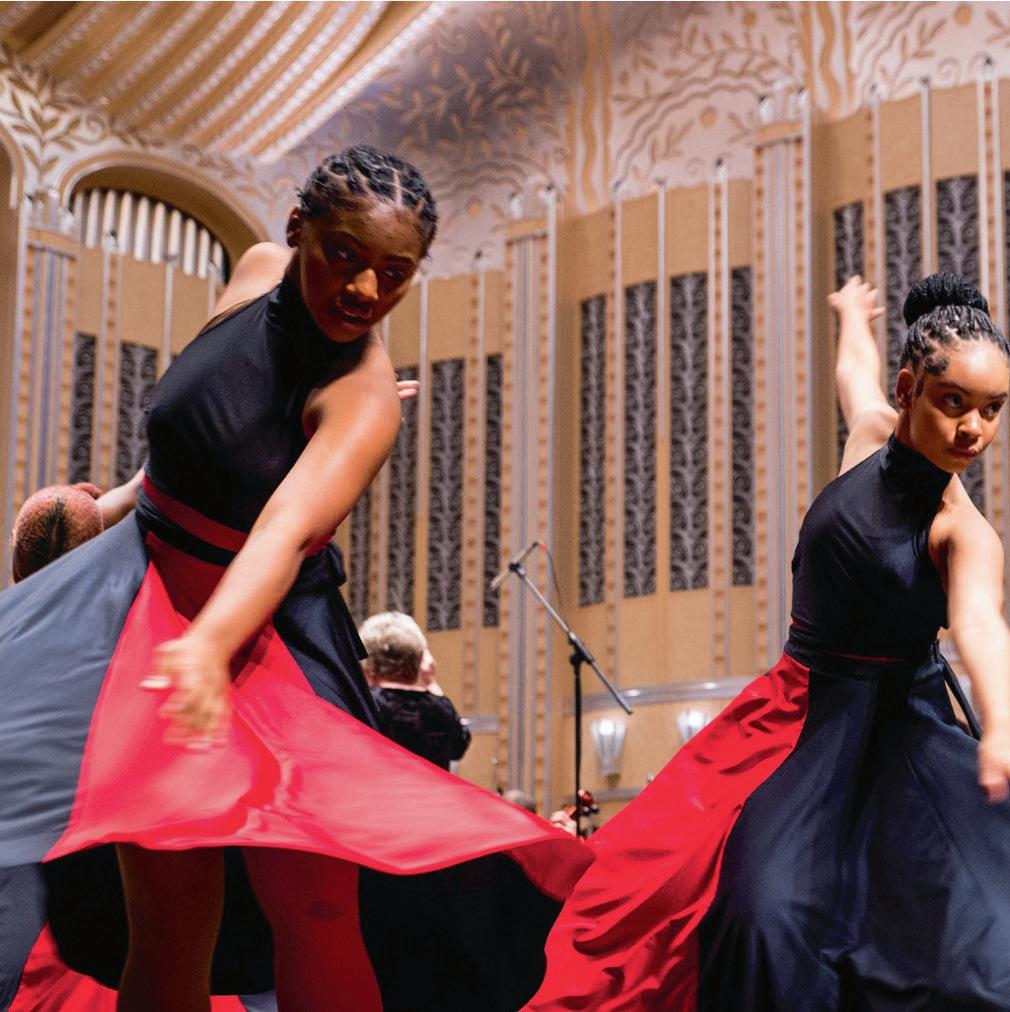

SETTING THE STAGE
for Success


We believe that all Cleveland youth should have access to high-quality arts education. Through the generosity of our donors, we have invested more than $12.6 million since 2016 to scale up neighborhood-based programs that serve thousands of youth year-round in music, dance, theater, photography, literary arts and curatorial mastery. That’s setting the stage for success. Find your passion, and partner with the Cleveland Foundation to make your greatest charitable impact.
(877) 554-5054
www.ClevelandFoundation.org/Success

Creative Arts Dance Academy
Tri-C
























 PHOTO BY SYLVIA ELZAFON
PHOTO BY SYLVIA ELZAFON























































